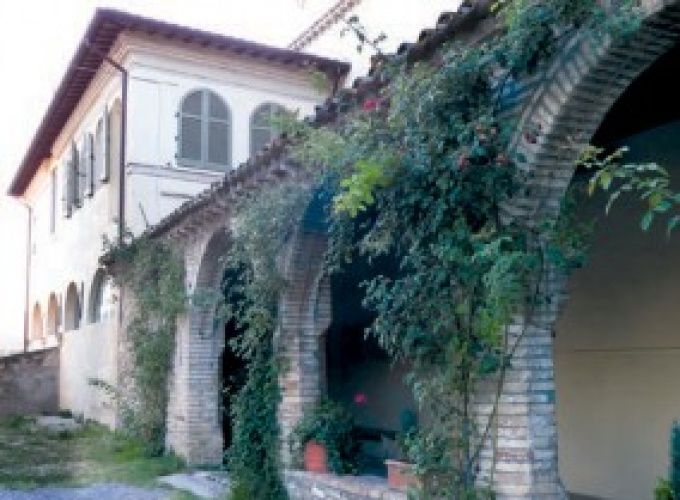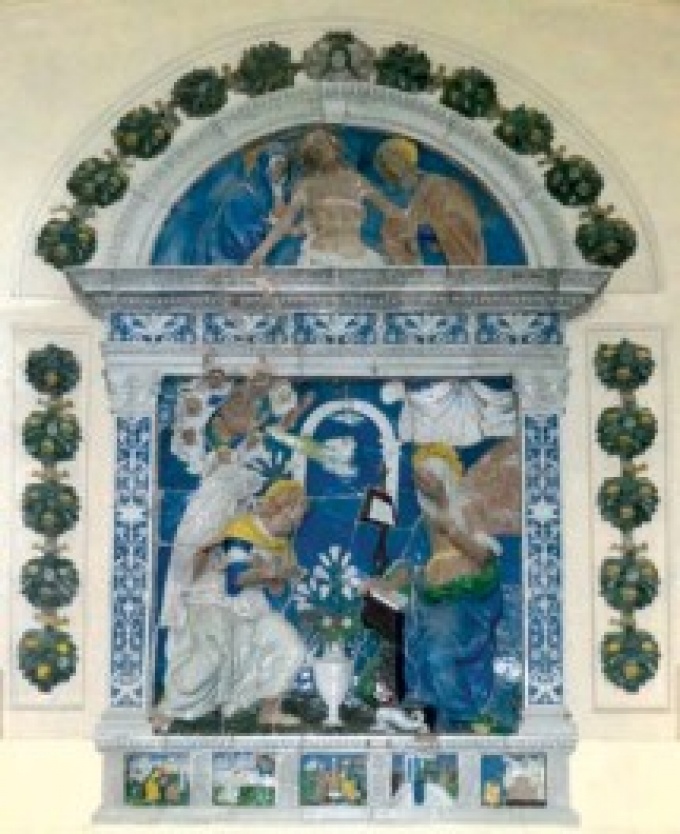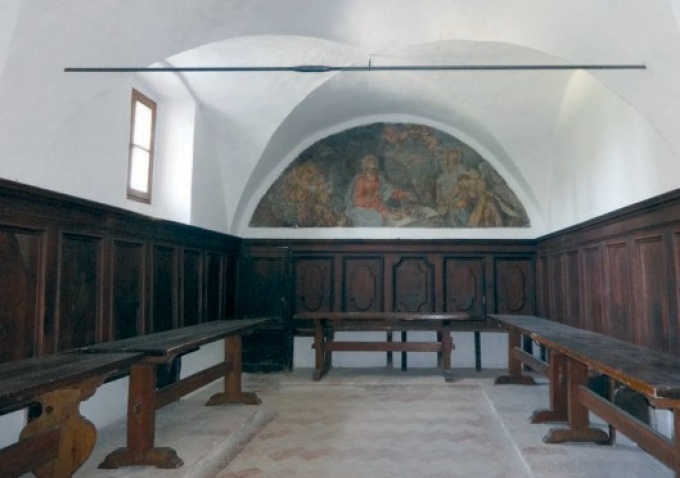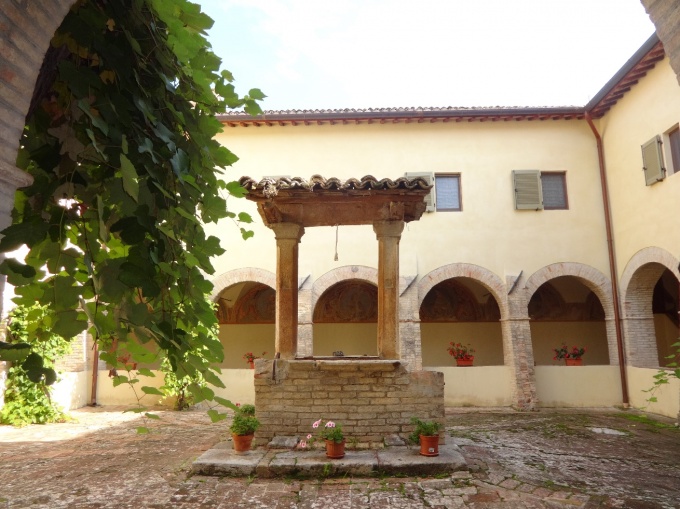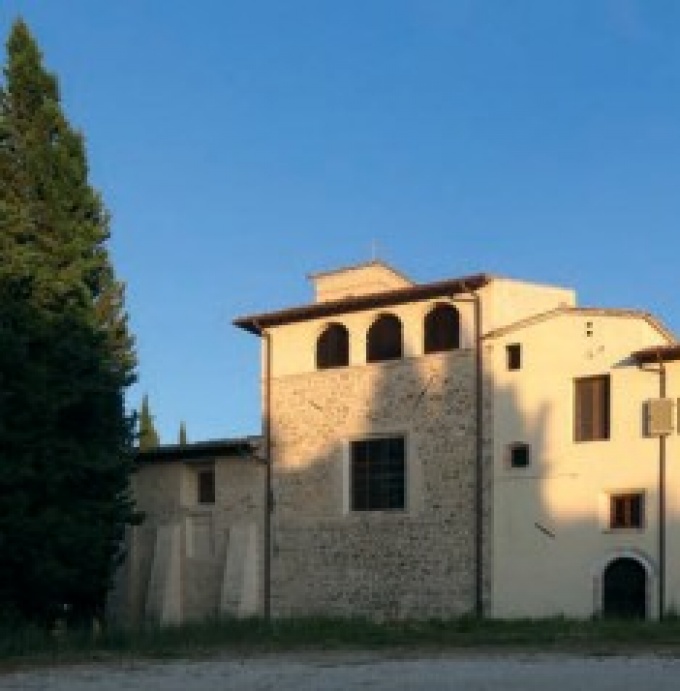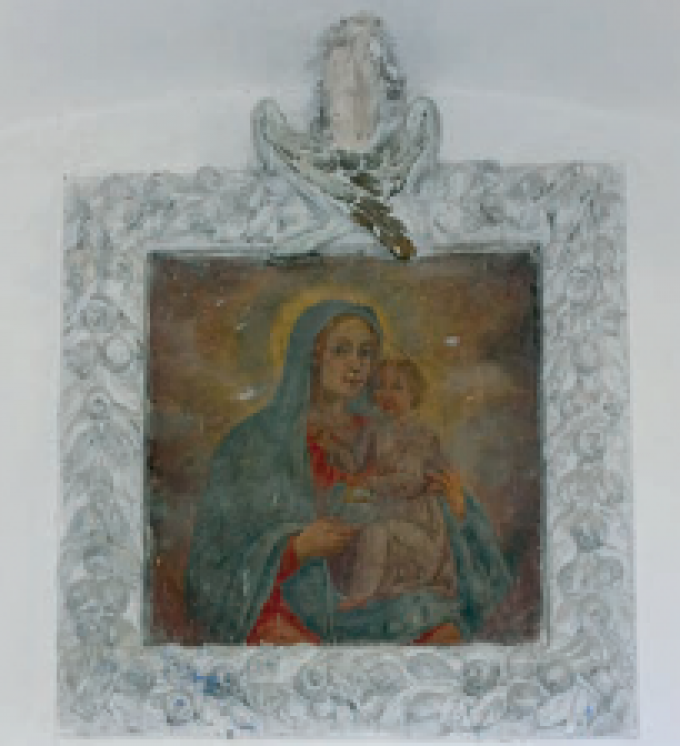Leaving from Porta Cannara, you arrive at Capro, where on a hill there are the church and the convent of Annunziata.
According to Candido Piatti, thy were founded by Benedictine monks from Sassovivo in the 11th century (1078) on the ruins of one of the two fortresses of Bevagna or accprding to Camassei on the Ruins of an equipped sentinel Castel for town advanced defence at 231 m. The church, known as San Savino or Sant’Ansovino from Capro, and the convent were dependent on the Abbey of Santa Croce di Sassovivo and, in 1138 were placed under the protection of the Apostolic See by Pope Innocent II.
In 1223 the monastery was destroyed by Frederick II, as the main monuments of the city of Bevagna.
Alberti recalls a controversy between the bishop of Spoleto and the Abbey of Sassovivo concerning the relevance of the church, for which in 1255 an agreement was reached, confirmed by Alexander IV: the church and the parish get the dependence of the monastery of Sant’Apollinare of Sambro near Collemancio with the obligation to annually pay 100 coins to the cathedral of Spoleto. The place is then governed by a prior and the ancient monks of Sassovivo until 1439; abandoned by the Benedictines, in 1487 Cardinal Marco Barbo, Commendatory Abbot of Sassovivo, authorized the opening of the convent with the consent of Pope Innocent VIII, (the seal is kept in the archive of Santa Maria degli Angeli) after having granted the church and the gardens by the side to the Minor Observant Order of San Francesco in Bevagna. It took the name of Annunziata and transferred the care of souls to the church of San Michele Arcangelo.
Eight years later, at the entrance of the church the same monks install that wonderful portal, all sober and all Umbrian, expressing the signs of classical and renaissance continuity on the same date that recurs gently spaced along the architrave: M 495!
With the bequest of Bernabeo Pucciati from Bevagna and the intervention of the Municipality in 1495, as engraved on the portal, the church of Annunziata is restored and initially houses nine monks. It has the typical characteristics of the observant churches: the façade, simple in its architecture, is adorned with terracotta shelves and is preceded by a brick porch with six arches. For the earthquake of 1832 the whole vault fell and was rebuilt in plaster and camorcanna. The bell tower was built in 1706. On the outside of the church towards the east there was a chapel dedicated to Sant’Antonio Abate with two altars and in 1746 it was restored with a cost of two ecus and fifty coins but then ruined with the earthquake of 1832 and was no longer built again. The compass of the church door, the orchestra, the organ, the four confessionals, the balustrade were made in 1851-1853. On the outside of the convent the small windows of 1490 are visible, which were used by the monks. The interior of the church is small and has a single nave.
The Church, although not very large, is beautiful and adorned with seven altars, very proper. There are good paintings, among others that one of San Sebastiano by Camassei (…). But above all we must admire the magnificent and architecturally beautiful “greater altar of glazed terracotta”, which among elegant pillars and a rich trabeation presents a picture of about two meters high and a little less wide, in which the Annunciation is depicted in high relief.
The work, dating back to about the middle of the 16th century, first wrongly attributed to master Giorgio Andreoli, Luca della Robbia, Giovanni della Robbia (or Luca il Giovane), is thought to be the work of the Florentine Santi Buglione (1494 -1576), which also worked on the decoration of the vault of a chapel of San Francesco from Assisi. In 1840 the terracotta was painted, covering its artistic value, which in August 1921 was restored, removing the colors superimposed with the particular potassium hydroxide washing.
As the Alberti says, in the church there are seven altars: the high altar, those dedicated to Sant’Antonio from Padova, San Pietro from Alcantera, San Sebastiano, San Tommaso, San Giuseppe and the stone altar, of a majestic shape, called the Crucifix for a sixteenth-century wooden crucifix attributable to Giovanni Tedesco, who worked for many convents looking between Perugia and the valley of Rieti.
Around the crucifix there is a fresco by Il Fantino dated to the end of 16th or the first years of 17th century, which represents the Madonna and San Giovanni and Francesco.
San Sebastiano is by Camassei as well. It was in the choir of the church and then it was brought to the Picrure Gallery of Bevagna in 1900.
Annarita Falsacappa, Giovanni Mariotti, Paolo Porzi – BEVAGNA GEMMA DEL PIANO. Immagini insolite e storie inedite – Dimensione Grafica Editrice – 2013 – pp. 203-214


